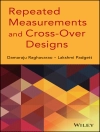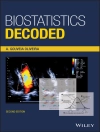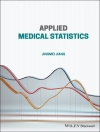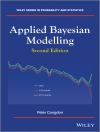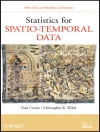This is the first text to examine the use of statistical methods in
forensic science and bayesian statistics in combination.
The book is split into two parts: Part One concentrates on the
philosophies of statistical inference. Chapter One examines the
differences between the frequentist, the likelihood and the
Bayesian perspectives, before Chapter Two explores the Bayesian
decision-theoretic perspective further, and looks at the benefits
it carries.
Part Two then introduces the reader to the practical aspects
involved: the application, interpretation, summary and presentation
of data analyses are all examined from a Bayesian
decision-theoretic perspective. A wide range of statistical
methods, essential in the analysis of forensic scientific data is
explored. These include the comparison of allele proportions in
populations, the comparison of means, the choice of sampling size,
and the discrimination of items of evidence of unknown origin into
predefined populations.
Throughout this practical appraisal there are a wide variety of
examples taken from the routine work of forensic scientists. These
applications are demonstrated in the ever-more popular R language.
The reader is taken through these applied examples in a
step-by-step approach, discussing the methods at each stage.
Table des matières
Foreword.
Preface.
I The Foundations of Inference and Decision in Forensic
Science.
1 Introduction.
1.1 The Inevitability of Uncertainty.
1.2 Desiderata in Evidential Assessment.
1.3 The Importance of the Propositional Framework and the Nature
of Evidential Assessment.
1.4 From Desiderata to Applications.
1.5 The Bayesian Core of Forensic Science.
1.6 Structure of the Book.
2 Scientific Reasoning and Decision Making.
2.1 Coherent Reasoning Under Uncertainty.
2.2 Coherent Decision Making Under Uncertainty of Reasoning.
2.3 Scientific Reasoning as Coherent Decision Making.
2.4 Forensic Reasoning as Coherent Decision Making.
3 Concepts of Statistical Science and Decision
Theory.
3.1 Random Variables and Distribution Functions.
3.2 Statistical Inference and Decision Theory.
3.3 The Bayesian Paradigm.
3.4 Bayesian Decision Theory.
3.5 R Code.
II Forensic Data Analysis.
4 Point Estimation.
4.1 Introduction.
4.2 Bayesian Decision for a Proportion.
4.3 Bayesian Decision for a Poisson Mean.
4.4 Bayesian Decision for Normal Mean.
4.5 R Code.
5 Credible Intervals.
5.1 Introduction.
5.2 Credible Intervals.
5.3 Decision-Theoretic Evaluation of Credible Intervals.
5.4 R Code.
6 Hypothesis Testing.
6.1 Introduction.
6.2 Bayesian Hypothesis Testing.
6.3 One-sided testing.
6.4 Two-Sided Testing.
6.5 R Code.
7 Sampling.
7.1 Introduction.
7.2 Sampling Inspection.
7.3 Graphical Models for Sampling Inspection.
7.4 Sampling Inspection under a Decision-Theoretic Approach.
7.5 R Code.
8 Classification of Observations.
8.1 Introduction.
8.2 Standards of Coherent Classification.
8.3 Comparing Models using Discrete Data.
8.4 Comparison of Models using Continuous Data.
8.5 Non-Normal Distributions and Cocaine on Bank Notes.
8.6 A note on Multivariate Continuous Data.
8.7 R Code.
9 Bayesian Forensic Data Analysis: Conclusions and
Implications.
9.1 Introduction.
9.2 What is the Past and Current Position of Statistics in
Forensic Science?
9.3 Why Should Forensic Scientists Conform to a Bayesian
Framework for Inference and Decision Making?
9.4 Why Regard Probability as a Personal Degree of Belief?
9.5 Why Should Scientists be Aware of Decision Analysis?
9.6 How to Implement Bayesian Inference and Decision
Analysis?
A Discrete Distributions.
B Continuous Distributions.
Bibliography.
Author Index.
Subject Index.
A propos de l’auteur
Franco Taroni, Institute de Police Scientifique et de Criminologie, University of Lausanne, Switzerland.
Silvia Bozza, Departimento di Statistica, Universit`a di Venezia, Italy.
Alex Biedermann, Bundeskriminalpolizei, Kommissariat Kriminaltechnik, Switzerland.
Paolo Garbolino, Faculty of Arts and Design, IUAV University, Venice, Italy.
Colin Aitken, School of Mathematics, University of Edinburgh, UK.






